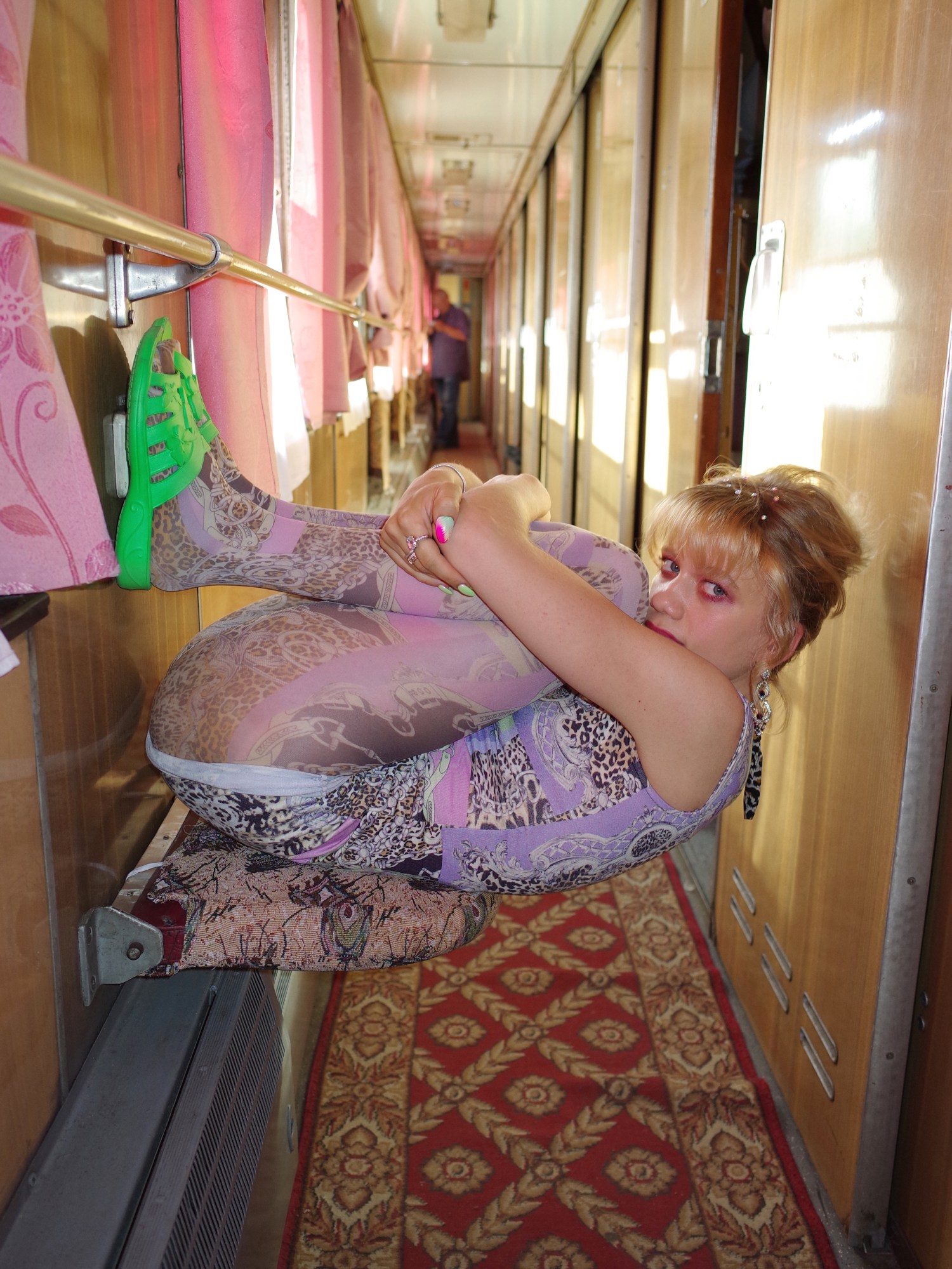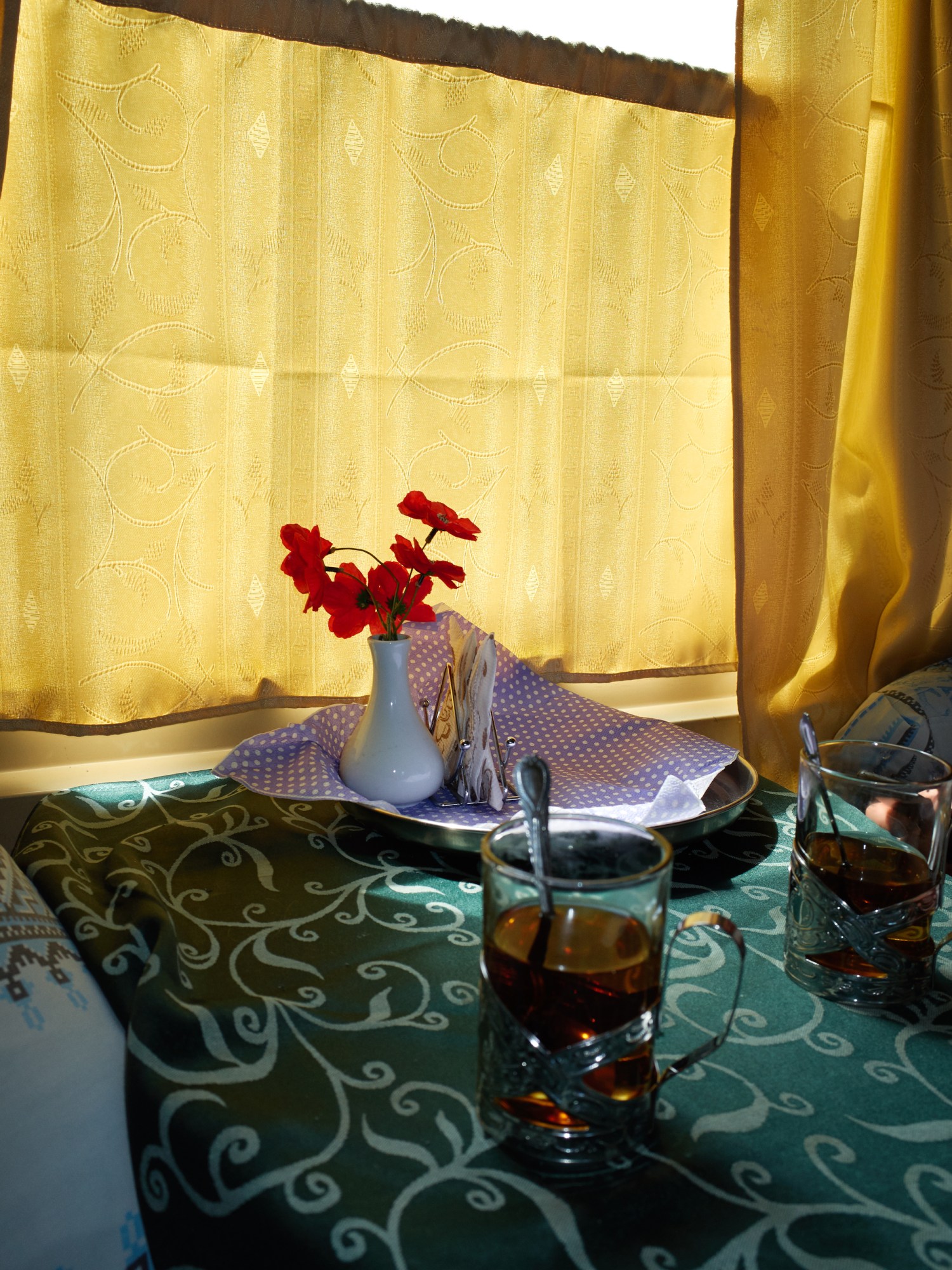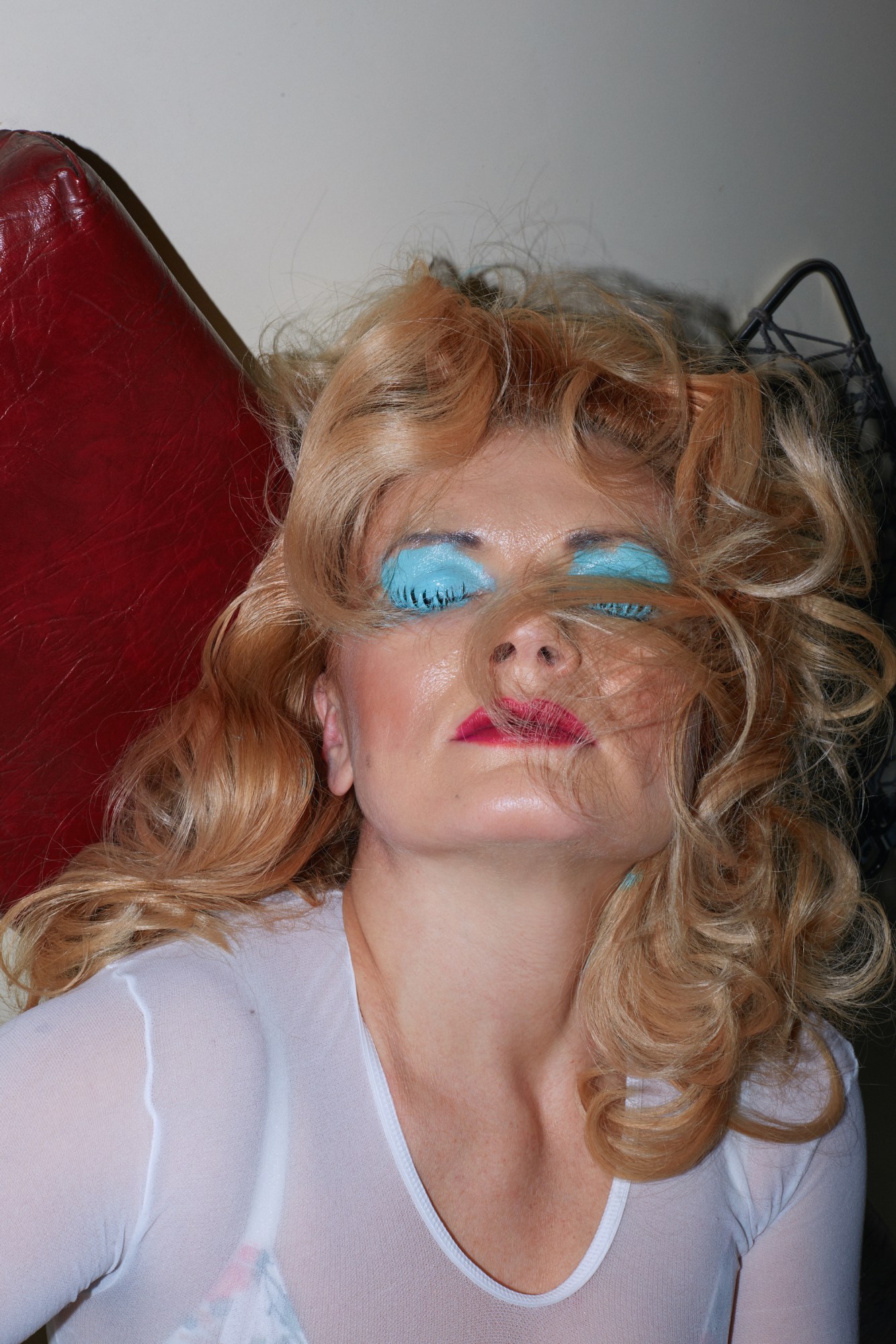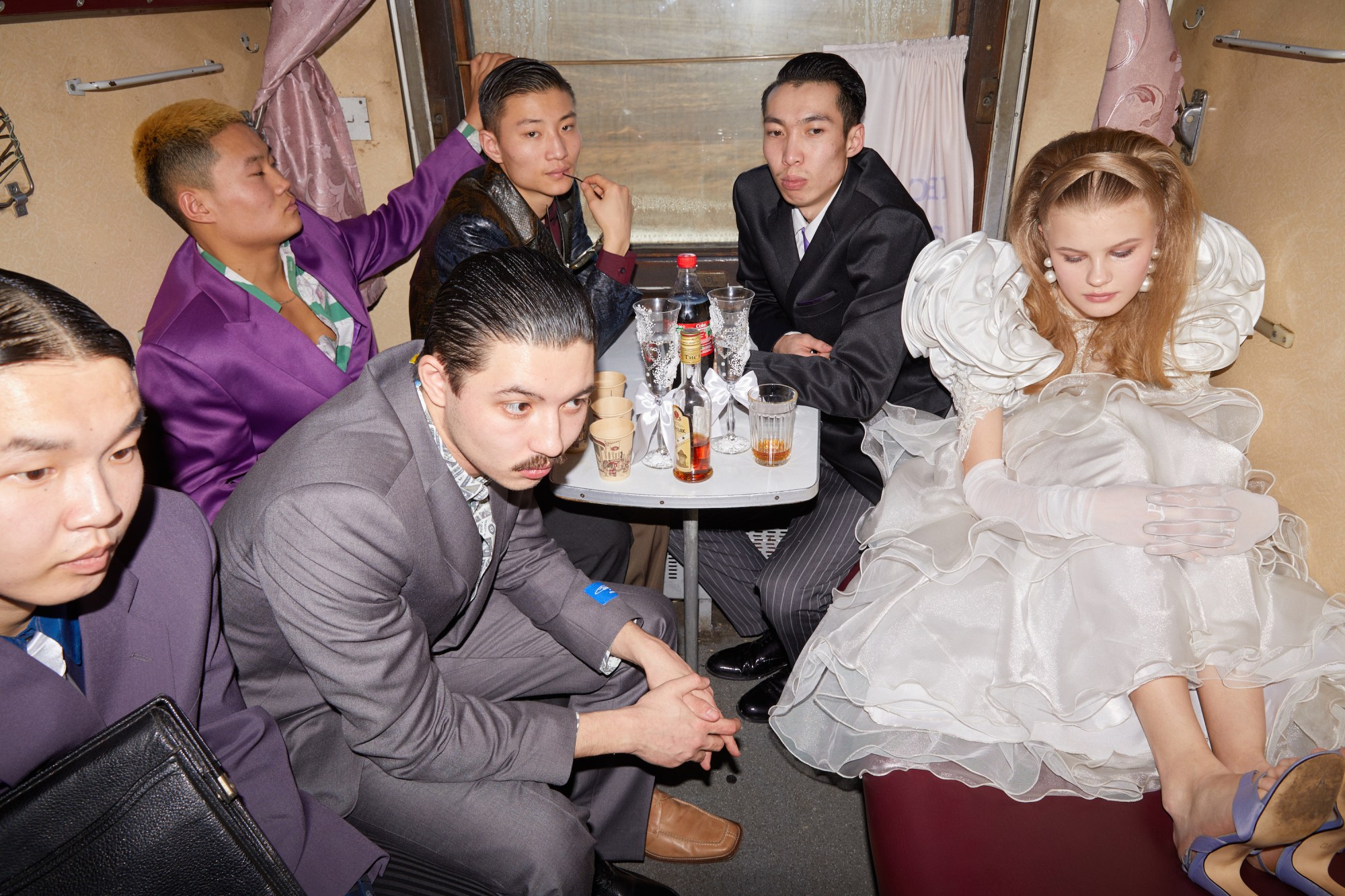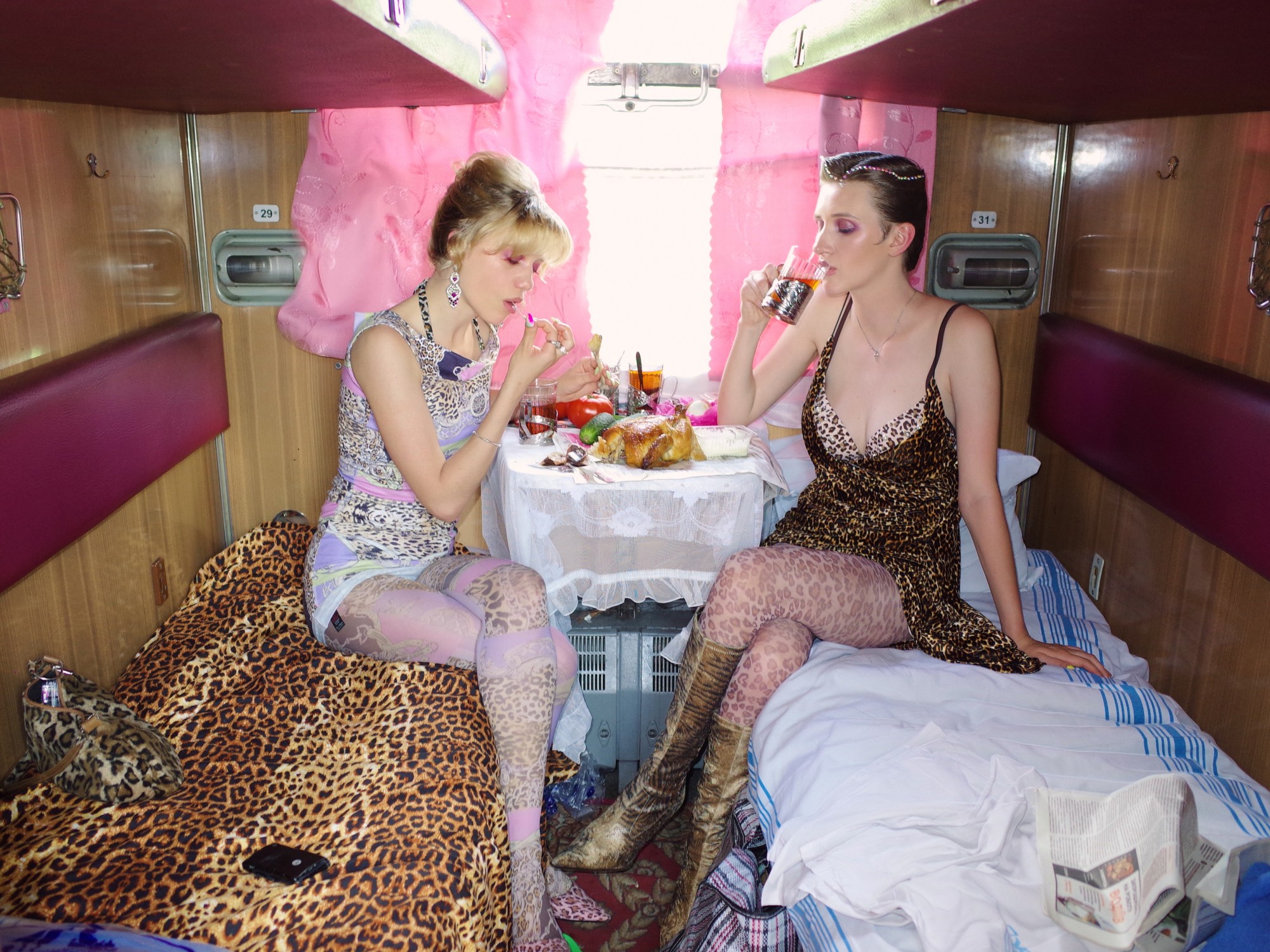There’s a distinct smell that greets travellers on the Ukrainan Railways in summertime — a potent concoction of whole roasted chicken, cling filmed eggs and homemade condiments prepared for the journey. Kitschy, still life images of this feast, laid out on newspapers and fluorescent pink plastic bags, are peppered throughout photographer Julie Poly’s new photo book Ukrzaliznytsia. It’s a hyperbolic study of the colourful characters and scenes that she encountered while training to be a conductor on the Ukrainian railways. “When Ukrainian people see those images they all laugh,” she says. “Everybody can recognise themselves. When I used to travel for my summer vacation, my mother would always make these things for me.”
Merging documentary and staged photographs that are “more grotesque” than reality, Poly hopes to recreate Ukrainian train journeys the way she remembers them. “Sometimes reality is not so bright,” the self-taught photographer explains. “It’s life. I decided to show it my way, by the eyes of a conductor. I took some characters from my memories, from what I saw before and I interpreted it in a more bright and colourful way.”
What results is a theatrical and gaudy series that tells the stories of male and female seductors; wedding parties and young lovers with flowers in their hair. There are pictures of friends dressed from head-to-toe in leopard print, and a middle-aged woman with piercing blue eyeshadow lounging across a cabin in red patent boots. Ankle-grazing-haired teens take selfies and a stripper in sequins straddles a table between a group of Ukrainian soldiers. “There’s a little bit of self irony,” she chuckles.
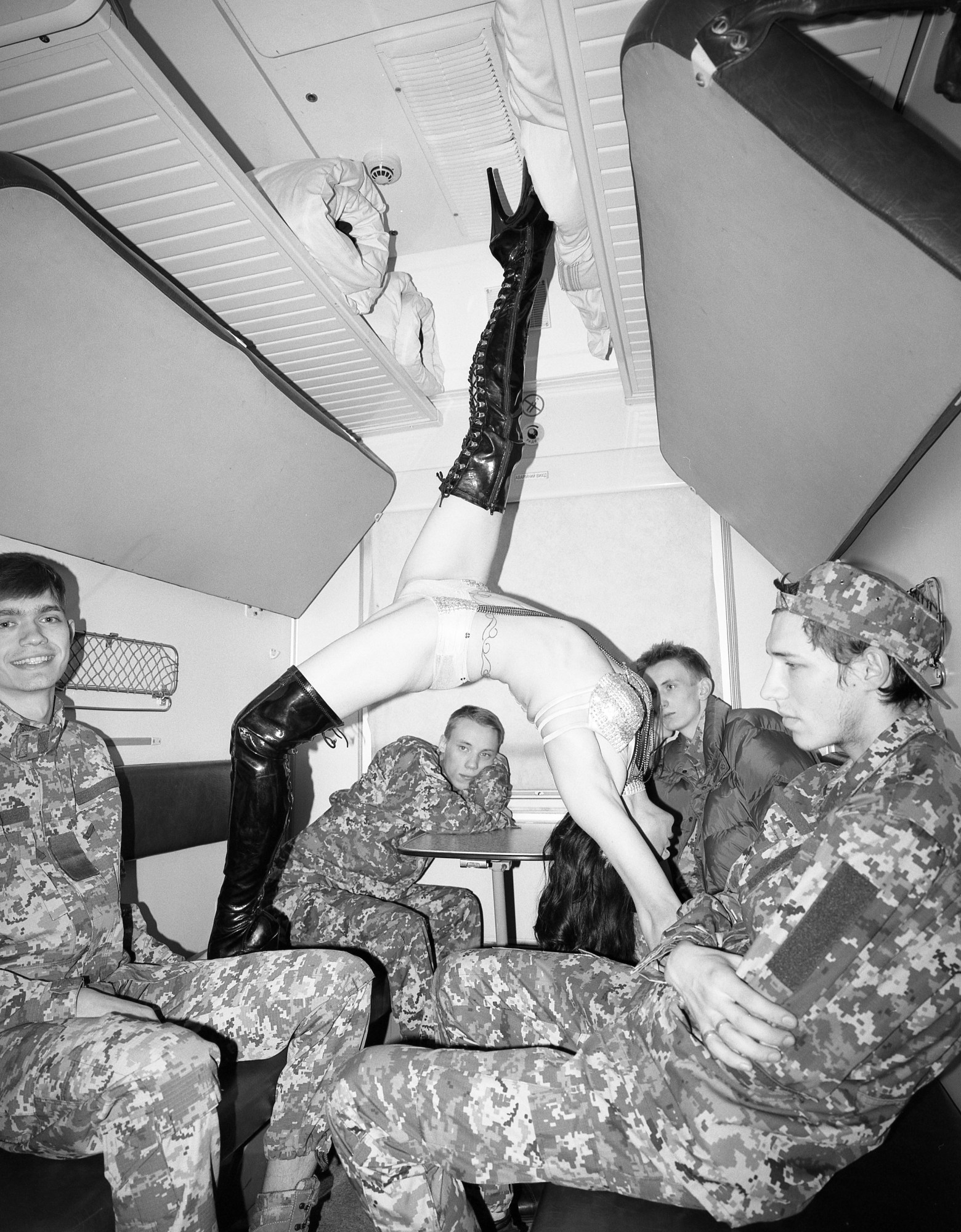
Born Yulia Polyashchenko in the industrial Stakhanov city in Eastern Ukraine (where her mother still lives, but she can no longer return to easily because of the political situation with Russia), Poly left home at 16 to study to become a conductor at the Ukrainian State University of Transport. In Ukraine, about 80% of railway workers are women, and it was a good, stable job that her parents approved of. Becoming an artist, like she’d wanted, was out of the question.
During her studies, Poly started attending a photo club in Kharkiv, which gathered photography lovers from five to 70 years old. She was friends with lots of students at the Kharkiv State Academy of Design and Arts too, and joined them for drawing and painting classes for a year. In 2014, she moved to Kyiv where she began pursuing her photography seriously, making a name for herself as a chronicler of Ukrainian youth culture. In 2016, she shot a feature for Vogue about club kids, and more recently a project with editor Ben Ditto, who would later art direct Ukrzaliznytsia.
But it took Poly a decade, from when she first stepped onto a train as a trainee conductor, until she decided to embark on this series. “I realized that I was only interested in talking about what I really know… I thought a lot about this experience, and the project matured for a while, but I finally decided to tell the world my unique story. I went to Stakhanov, found my old train uniform, photos and realized that now is the best time for it.”

Punctuating the book are pictures of Poly, dressed up like a conductor in her old uniform demonstrating how to fold a towel perfectly, check passports, signal to the train driver and serve tea. She explains that each conductor is assigned a carriage, which they try to make as comfortable as possible, bringing a piece of their personality to the decoration by adding flowers, trinkets and religious paraphernalia. “Wagons are unique and inimitable in their interior,” Poly says. Many of the patterns are unique to the Ukrainian railway: “Where else in Europe do you find linoleum covered floors with red carpet on it on a train?”
The atmosphere on board also changes depending on the direction of the train. Travelling to central Ukraine, it’s all business with workers changing outfits for meetings en route. The west is agricultural so people come on board carrying live animals dressed in the traditional vyshyvanka, while the south, of course, is all about vacation. “People in super skinny shorts, leggings, super neon, green, pink, everybody goes to the south to the sea so you can feel it in the air,” Poly says. “They buy a lot of beer, a lot of drinks, it’s a totally different vibe. It depends what the final destination is.”
In the low cost cars of the train in summer, where beds and benches are crammed together, and there are open partitions, travelling can become a very intimate experience. People take off their clothes to keep cool, even the old ladies who wear just their bras and shorts, with everyone sitting for hours, invading each other’s personal space.
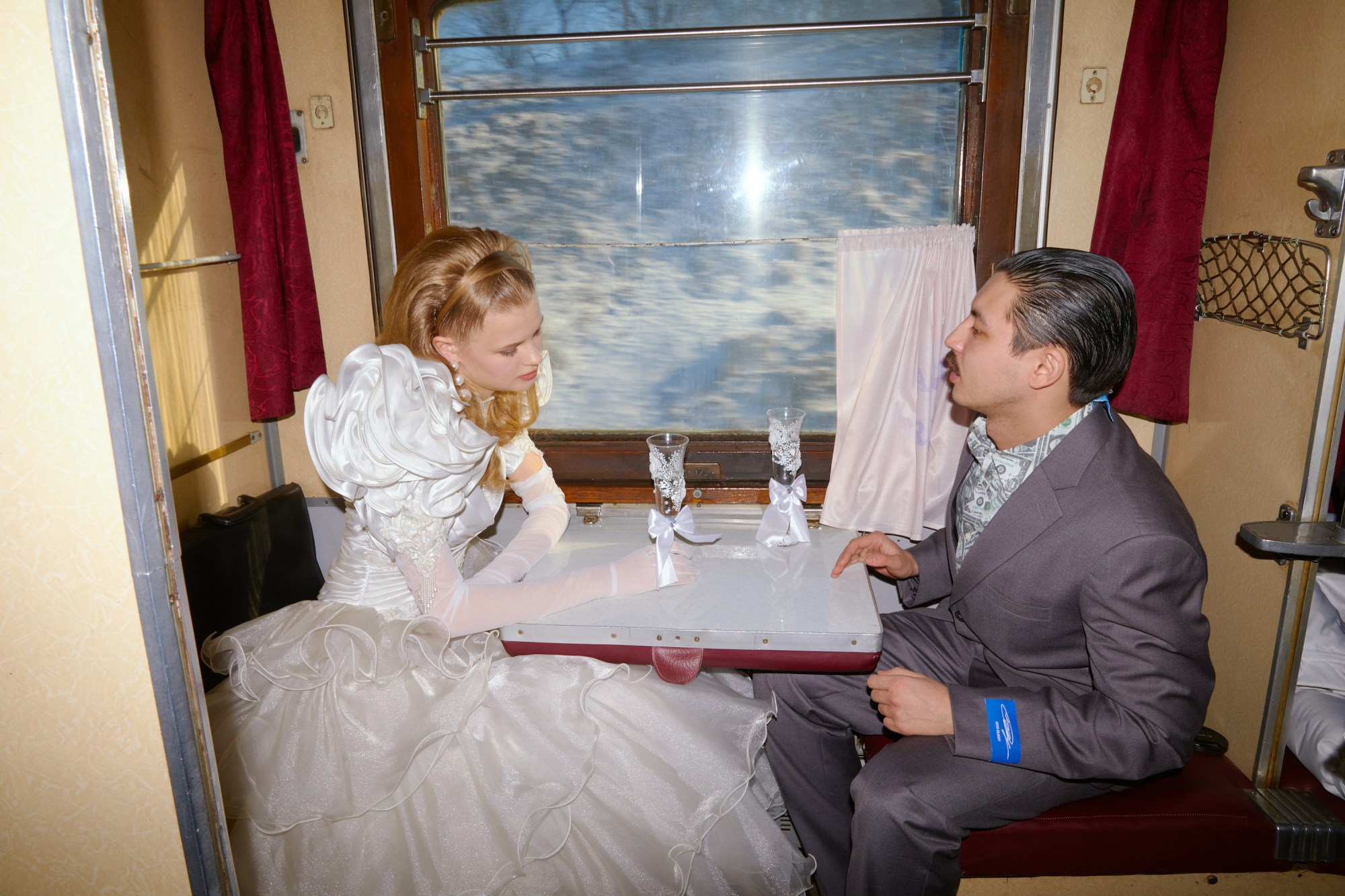
“The train looks like a simple iron construction, but it is full of life on the inside,” Poly says. On the Trans-Siberian Railway between Kharkiv and Vladistok, for example, traders buy large quantities of vodka and expensive caviar to sell back at home. On this route, there are “a lot of bad guys” and con-people. Inspired by a story she was told by one of the older conductors about a woman who seduced men, using clophelin to drug and rob them, Poly reimagines the scene in a series of photographs. She names the fictional woman Katia and dresses her in black patent thigh-high boots, capturing her back-bending on a table between a group of soldiers.
To accompany the images she writes comical poems “A smile, the Asiatic eyes/ This isn’t her first enterprise/ The latest victim will recall/ Her charms, the geisha’s unique thrall/ The cops write out a new report/ About the damages she’s brought/ A watch, a chain, and wads of cash Katyusha pinches in a flash.”
While these stories are a huge part of Ukrzaliznytsia, it’s the flashy, outlandish and obscure outfits that the fashion photographer really loves. She recreates the glitzy fashion of people in transit, the clingy 90s-inspired disco outfits and over-the-top satin wedding dresses. One Ukrainian woman stands in a carriage, coupled up with her groom from Mongolia, a classic trope in the country where girls often marry foreigners, she says.
Poly hopes Ukrainians will be able to see the irony in her photographs and laugh. “In some images I recognize myself: I wear leopard print, sometimes I make up my eyes with blue shades, I can eat chicken on a train. Most of the characters of the book were inspired by real and typical passengers.” But for foreigners, she knows the images might be shocking and surreal, she aspires only to share a little bit of Ukraine’s unique history and culture to the world.
